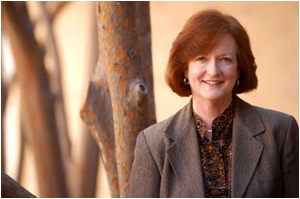Researchers
By Frankie Barnhill
Community colleges are not what they used to be.
In the past 30 years, enrollment at community colleges has quintupled, and the student body looks quite different than it did in the 1960s.
Once, community colleges were known as junior colleges, and they served as a stepping stone to four-year institutions. Many students still do transfer to four-year colleges, but many attend community college as an end in itself. They plan to get two-year degrees.
And community colleges have become diverse places. Today, 80 percent of high school graduates go to college.
"We have racial gaps in almost every level of education," says James Rosenbaum, a sociologist from Northwestern University. "Going to college is not one of them."
But more enrollment does not necessarily equal more diplomas. Rosenbaum says fewer than 30 percent of African Americans and Latinos ever graduate. He says that dismal graduation rate is a threat to the country's economy, because more jobs require a college education today. Employers need skilled workers, Rosenbaum says, and if they can't find them in the United States, they'll take jobs overseas.
Other experts share his concern.
"For many years the United States led the world in terms of its ability to educate its population to the level of a college degree," says Kay McClenney, who runs the Center for Community College Student Engagement at the University of Texas at Austin. "We are now falling behind."
McClenney says community college students are more likely to drop out than students at four-year schools. Her organization surveys community college students nationwide. It's found that certain risk factors decrease those students' chances of graduating. For example, many have children at home, work 30 or more hours a week, or are the first in their family to go to college. The majority of community college students don't attend full-time.
But McClenney says institutions cannot use the difficulties their students face as an excuse for low graduation rates.
"The challenge is to figure out how to not blame the circumstances that students bring with them to college and how the college can design itself so that you create conditions for students' success," McClenney says. "We can't just sit back and say, 'Oh well, they were destined to fail, not our fault.'"
Rosenbaum agrees that colleges ought to do more once students reach their doors. But his research shows that the problem begins in high school. According to Rosenbaum, the easiest way to predict whether a student will succeed in college is to look at that student's high school GPA.
According to Rosenbaum, about a quarter of all high school students have a C average or less - and college students whose high school GPAs were that low have an 80 percent chance of dropping out, never getting a degree..
"And worse than that? Some of them don't even get any college credits," Rosenbaum says. "These students have plans that are most likely not going to come true, and nobody warns them."
He says that although high schools have convinced students that post-secondary education is necessary, they have failed to prepare students to succeed in college. According to McClenney, two-thirds of community college students need to take at least one remedial class, most often in writing or math. Rosenbaum says those statistics illustrate a failure in high schools.
"[Students] could have taken [these courses] in high school, but they didn't; no one told them they should, no one told them they would need it," Rosenbaum says. "This time they're going to be paying for it, and they will not get college credit."
According to data collected by the Center for Community College Student Engagement, 68 percent of students who enter community colleges believe they are academically prepared and motivated to be successful. McClenney says the disjunction between what students think they can achieve and their actual performance means schools need to give them a reality check.
"Closing that gap between motivation and real understanding of what successful college behavior entails is an important challenge for community colleges," McClenney says.
McClenney says that understanding this behavior can happen through a variety of programs. Mandatory advising meetings and freshman orientation sessions are programs more likely to be found in an elite private school, but McClenney says they're appropriate for community colleges too.
"[During focus groups with students] we nearly always ask the students whether they ever thought about dropping out of college," McClenney says, "and they sort of laugh at us… look at their watches and say, 'Yeah about every 20 minutes I think about dropping out.'
"So the follow-up question is: So why didn't you? Why are you still here? What really made a difference in your success? And then [students] give us a name of a person. It is always about a relationship."
Rosenbaum agrees that advising sessions are essential for getting students to the graduation podium, especially for young Latinos. He says that these students are the "lowest-hanging fruit" when it comes to equipping them with information about navigating the complicated higher-education system.
"[Latinos] have less familiarity with the college environment than other families do, and as a result they have less of this college social knowhow," Rosenbaum says. "On the one hand, that means there's a big disadvantage. On the other hand…that's not tough stuff to present, and we need to focus on programs that present it. And if students get it, Latinos benefit from this even more than other students."
Back to Rising by Degrees.


